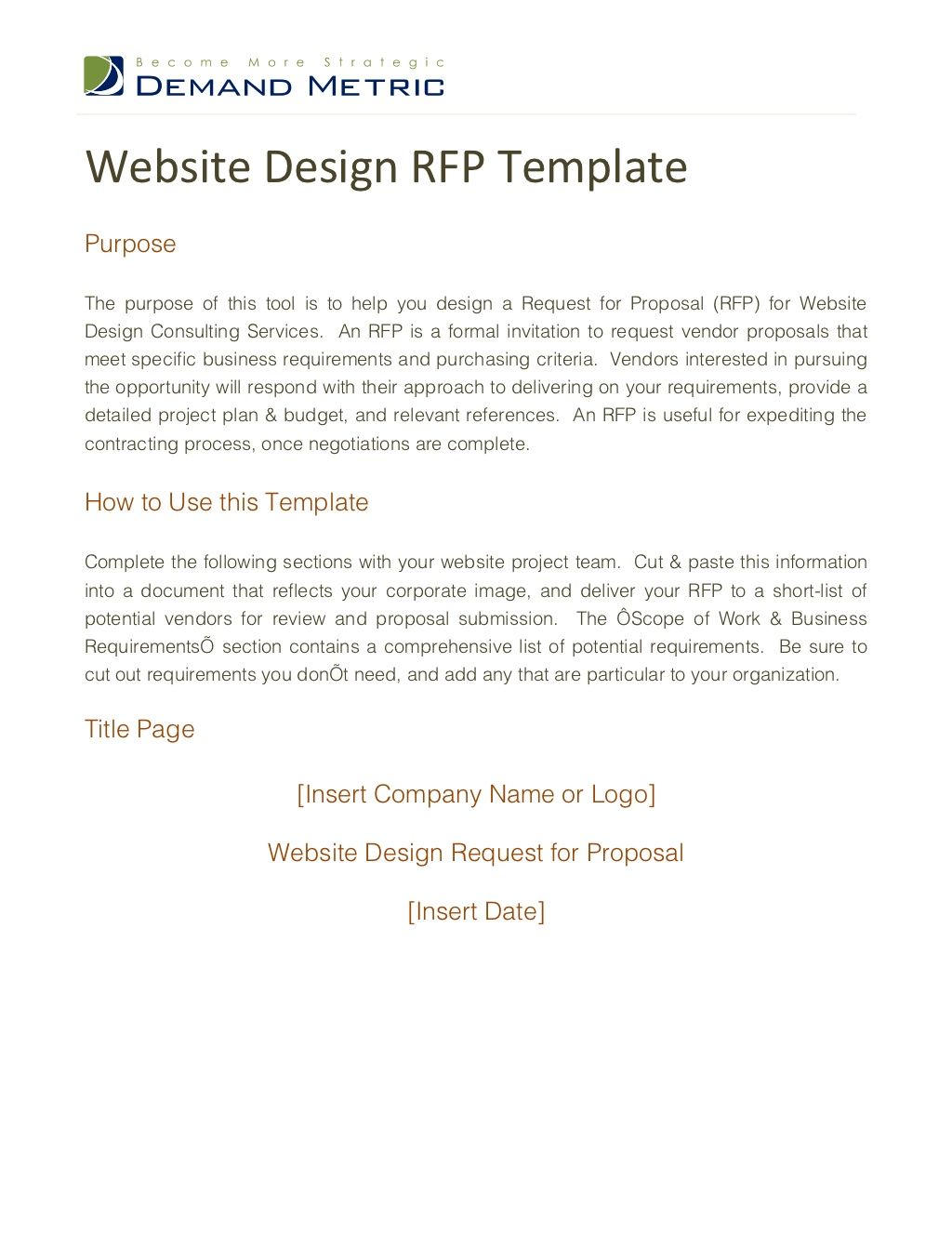
How to Create a Concise Website Design RFP
If you don’t have the capabilities to design an effective business website, seek out a designer. Developing a well-organized website design request for proposal (RFP) can help you find the right website partner and understand project requirements.
Reputable web agencies receive RFPs all the time, so make sure your project scope isn’t disorganized to avoid being ignored.
Follow these tips to write a concise website design RFP and set your project up for success.
What is a website design RFP?
A website design request for proposal (RFP) is a document that outlines your business’ goals and scope for the new website. You may prepare an RFP if you lack in-house resources or need a more complex website.
Creating an RFP helps your business ensure the selected web partner can meet your expectations.
5 key components of a website design RFP
While RFP details depend on the business needs, consider including these key components:
1. Company background
Start with a brief overview of your business and current products or services. Share the role of your existing website in marketing, recruitment, and branding. Describe your ideal clients or audience and the internal website team involved in the project.
2. Project goals and objectives
Discuss project goals with your stakeholders to assess your website situation and define what success looks like for the project. Reasons for creating a new website may include building a professional site, lead generation, or supporting recruitment.
3. Design and development requirements
Outline your design needs and functionality requirements for the new site. Include inspiration sites or competitor sites and specify internal systems integrations or unique features. State if you are looking to build the site on a specific platform like WordPress or utilize a specific eCommerce system.
4. Budget and timeline
Clearly define your budget and timeline, as web partners primarily evaluate these requirements. Flexibility in budget allows for discussion, and a tight project scope is essential. Consider industry-standard timelines of 2 to 3 months and communicate any major business milestones that may affect the site launch.
5. Selection criteria
Outline any deadlines and request additional information beyond a proposal, such as past design work or references. Specify if you are looking for experience in specific types of websites (B2B, B2C, eCommerce) and add any miscellaneous items you want to see in the proposal, such as hosting and maintenance costs.
Your RFP should build collaboration
Instead of sending your RFP to endless designers, consider collaborating with your top 3-4 web design companies. Sending a concise and well-organized RFP will elicit better responses and lead to a successful partnership.
Hello!
I’m Andrew Brooks, a seasoned finance consultant from the USA and the mind behind phonenumber247.com.
My career is built on a foundation of helping individuals and businesses thrive financially in an ever-changing economic landscape. At phonenumber247.com, my aim is to demystify the complex world of finance, providing clear, actionable advice that can help you navigate your financial journey with confidence. Whether it’s personal finance management, investment strategies, or understanding the nuances of market dynamics, I’m here to share insights and tools that can propel you towards your financial goals.
Welcome to my digital space, where every piece of advice is a step closer to financial clarity and success!
